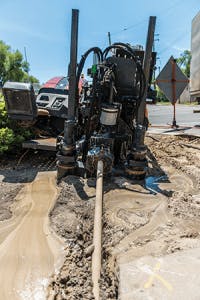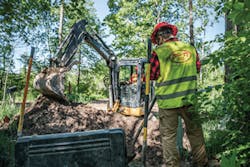How to Amend Deficiencies Facing Underground Construction
This year, changes to the underground utility industry are occurring. Many states have chosen to revise their Underground Utility Prevention Acts to include more stringent guidelines and harsher penalties. The Department of Transportation recently passed changes to the Hours of Service rules to further restrict how long employees can drive/work. They also released a mandate to enforce nearly all companies to implement Electronic Logging Devices to make sure there is even more oversight.
The construction industry as a whole is slowly moving from the low-bid mentality when it comes to handing out jobs to using only companies that meet certain safety-related requirements. The requirements include having an active safety program with oversight by a safety professional, and maintaining low levels of Recordable Incidence, Experience Modification, and DART rates.
This still isn’t enough.
Interestingly, directional drilling, plowing, and trenching crews operating in the telecommunications industry do not typically need any sort of training or education other than that of a machine-operating demo.
We must remember that human capital is of the foremost importance. It does not matter what type of newest and greatest equipment our organization has if our team members fail to run it properly and, more importantly, safely.
Unfortunately, the initial reaction to the reports of contaminated water in Flint was nothing more than the speed of slow. Soon after, however, public opinion swayed the minds of the powers at be. Now, the Federal government is allocating $80 million dollars to fix the water system in Flint.
That means contractors are likely digging in Flint city limits to start the process of fixing the water crisis. But who is doing the digging?
You can expect that many companies with superior safety standards will be utilized to rebuild Flint’s water system. Unfortunately, you can also expect a handful of contractors with sub-par standards and zero emphasis on safety will be involved as well.
In this day and age, the latter is unacceptable. We have the means to vet anyone involved with utility construction. So, why isn’t there a standard that sets the bar?
Our infrastructure is the circulatory system of our country. It’s important to not only protect the workers as they install this system, but also to protect the public once any utility has been installed. I believe that the standards of utility installation need to be re-evaluated.
The government requires oversight for the construction, operation, and maintenance of natural gas and petroleum lines in the form of the Operation Qualification (OQ) rule. Why not require similar training for other utilities?
Gas companies are replacing large amounts of aging gas lines while focusing on new construction expansion. Telecommunications companies are pushing fiber-to-the-home all over the country in an effort to offer the fastest speeds possible. The time to address these issues is now. Too often we follow through with requirements just to say we are compliant. We forget that these requirements aren’t busywork; they serve a purpose. They are developed and implemented to protect human life.
Below are 10 minimum standards I recommend all contractors adopt and implement immediately:
1. Hire a Safety Manager with Field Experience and Certified Occupational Safety Specialist (COSS) certification.
2. Implement an educational program that helps crew members understand the basics of spotting utilities and working around existing utilities in general.
3. Require that an approved Operators Qualification Evaluator (someone who is accredited by a third party) regularly evaluates crew members’ onsite competencies.
4. Complete a pre-check job safety analysis (for every day, no matter if you are on the same job for a month).
5. Have First Aid/CPR trained crew members.
6. Use incident-reporting procedures.
7. Require that Personal Protection Equipment (PPE) is worn at all times.
8. Install fire extinguishers on the job site by the drill at all times. Also, be sure a commercial-grade first aid kit is easily accessible.
9. Require Safety Data Sheets (SDS) Reports on a jobsite.
10. A Department of Transportation (DOT) trained person who is familiar with on/off scheduling and reporting.
Human capital is the most important part of any business. Keeping people well-trained and safe is the FIRST priority in getting things done in the field. All else should follow.
Work Cited
1. http://www.phmsa.dot.gov/portal/site/PHMSA/menuitem.6f23687cf7b00b0f22e4c6962d9c8789/?vgnextoid=a62924cc45ea4110VgnVCM1000009ed07898RCRD&vgnextchannel=f7280665b91ac010VgnVCM1000008049a8c0RCRD#QA_6
2. http://www.phmsa.dot.gov/pipeline/tq/o
Other useful link:
US DOT Pipeline statistics
http://www.rita.dot.gov/bts/sites/rita.dot.gov.bts/files/publications/national_transportation_statistics/html/table_01_10.html






